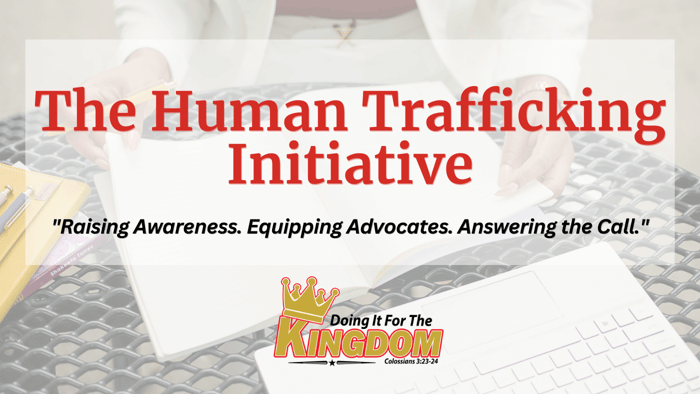Table of Contents
- Why Victims Stay: Understanding Trauma Bonds & Psychological Manipulation in Human Trafficking
- What Is a Trauma Bond?
- How Traffickers Use Trauma Bonds & Psychological Manipulation in Human Trafficking
- The Neurobiology of Trauma Bonds
- Real-Life Case Studies: Trauma Bonds & Psychological Manipulation in Human Trafficking
- Resources
- Why Victims Don’t Just Leave: Trauma Bonds & Psychological Manipulation in Human Trafficking
- How to Support Victims in Breaking Free from Trauma Bonds & Psychological Manipulation in Human Trafficking
- Final Thoughts on Trauma Bonds & Psychological Manipulation in Human Trafficking
- FAQs
Why Victims Stay: Understanding Trauma Bonds & Psychological Manipulation in Human Trafficking
Why Victims Stay: Understanding Trauma Bonds & Psychological Manipulation in Human Trafficking
 When we hear about human trafficking, one of the most common—and most harmful—questions people ask is, “Why didn’t they just leave?” The answer lies not in physical chains but in psychological ones.
When we hear about human trafficking, one of the most common—and most harmful—questions people ask is, “Why didn’t they just leave?” The answer lies not in physical chains but in psychological ones.
Human traffickers don’t always rely on force to keep victims under their control. Instead, they use powerful psychological tactics that manipulate, isolate, and emotionally bond victims to their abusers. These tactics are rooted in what mental health professionals call trauma bonds—deep emotional attachments formed through cycles of abuse, fear, dependence, and intermittent kindness.
In this blog, we’ll unpack what trauma bonding is, how traffickers create and maintain it, and what we can do to help victims break free.
What Is a Trauma Bond?
A trauma bond is a strong emotional connection that develops between a victim and their abuser during a cycle of abuse and reward. The relationship may start with kindness, promises of love, or safety. But as the abuse begins—whether physical, emotional, or sexual—the victim clings to the hope that the abuser will return to their original “loving” behavior.
This bond becomes stronger the longer the abuse continues, especially when the abuser alternates between cruelty and affection. Victims become emotionally invested in “making it work,” even when they are being exploited. In trafficking, this can make a victim appear loyal or even protective of their trafficker.
How Traffickers Use Trauma Bonds & Psychological Manipulation in Human Trafficking
Human traffickers are master manipulators. They use psychological control far more often than physical restraint. Here are some common tactics:
1. Grooming and Flattery
Traffickers often begin by showering their victims with attention, affection, and gifts. They pretend to care, offer false promises of love or opportunity, and build trust.
2. Isolation
Victims are gradually cut off from family, friends, and outside support. Traffickers may move them to different cities or control their communication and finances.
3. Threats and Fear
Traffickers instill fear by threatening the victim’s safety—or that of their family. They may say, “If you leave, I’ll find you,” or “No one will believe you.”
4. Blame and Gaslighting
Victims are made to feel responsible for the abuse. Statements like “You made me do this” or “No one else will love you” confuse and trap them emotionally.
5. Intermittent Kindness
Just when victims consider leaving, the trafficker may show a sudden act of kindness—buying gifts, showing affection, or making false promises. This emotional whiplash deepens the trauma bond.
6. Economic Dependence
Many victims rely on their trafficker for food, shelter, money, or drugs. This creates a dependency that can feel impossible to escape.
The Neurobiology of Trauma Bonds
Trauma bonds are not just emotional—they're chemical. Abusive relationships can trigger the release of powerful brain chemicals like oxytocin, dopamine, and cortisol: 
Oxytocin creates emotional bonding, even with someone harmful.
Dopamine rewards risk-taking and the hope of positive outcomes.
Cortisol causes stress and anxiety, creating a constant state of survival.
This biochemical cocktail reinforces the cycle. Over time, victims associate the abuser with both pain and comfort—making it incredibly difficult to break free.
Real-Life Case Studies: Trauma Bonds & Psychological Manipulation in Human Trafficking
✦ Atlanta College Student Case (2020)
In a widely reported case in Atlanta, a 19-year-old college student was trafficked by a man she met at a party. At first, he seemed caring—helping her with tuition, buying her books, and calling her his “queen.” Over time, he convinced her to drop out of college and promised they’d “build a future together.”
What began as a romantic relationship soon turned into coercive control. He took over her finances, restricted her phone use, and started selling explicit images online. When she objected, he threatened to expose her and harm her younger brother. Even after multiple interventions by friends and a counselor, she returned to him several times before finally escaping. Her trauma bond was deepened by fear, isolation, and emotional dependence.
🔗 Source: Polaris Project Survivor Stories
✦ Texas Runaway Youth Case (2021)
A 17-year-old girl from Houston was reported missing after leaving home during a family argument. Within days, she was targeted by a trafficker posing as a supportive older man on Snapchat. He offered her a place to stay and meals—then introduced her to “clients.” He moved her from motel to motel, using manipulation and threats to keep her silent.
She was eventually recovered during a multi-state trafficking investigation led by Homeland Security. In interviews, she revealed she “felt loved” by her trafficker because he showed her more attention than her family. This emotional manipulation is common in trauma bonds.
🔗 Source: National Center for Missing & Exploited Children
✦ New York Teen Sextortion Case (2023)
In a 2023 case reported by the FBI, a trafficker posed as a teenage boy on Instagram to connect with a 16-year-old girl. After grooming her into sharing explicit images, he blackmailed her into sending more and threatened to release them unless she agreed to meet in person. She complied out of fear, and the abuse escalated over several months.
Investigators found he had manipulated dozens of teens across multiple states. The cycle of threat, shame, and intermittent “rewards” created a complex trauma bond.
🔗 Source: FBI - Sextortion Cases
Resources
National Human Trafficking Hotline – Call 1-888-373-7888 | Text “HELP” to 233733: https://humantraffickinghotline.org
Love146 – Survivor care and youth education: https://love146.org
FBI Human Trafficking and Sextortion Cases – Reports and prevention strategies: https://fbi.gov
Why Victims Don’t Just Leave: Trauma Bonds & Psychological Manipulation in Human Trafficking
Here are just a few reasons victims stay or return to their traffickers:
Fear of violence or retaliation
Emotional attachment and trauma bonding
Lack of access to resources or safe housing
Shame and guilt
Fear of arrest or legal consequences
Cultural or language barriers
Distrust of authorities
Blackmail
For survivors, leaving can feel more dangerous and uncertain than staying.
How to Support Victims in Breaking Free from Trauma Bonds & Psychological Manipulation in Human Trafficking
Understanding trauma bonds is key to helping survivors heal. Here are a few ways to offer trauma-informed support:
1. Avoid Judgmental Language
Don’t ask, “Why didn’t you leave?” Instead, ask, “What support do you need now?”
2. Build Trust Slowly
Survivors may be wary of authority or helpers. Respect their boundaries and choices.
3. Provide Consistent Support
Create safe environments where survivors can return even if they relapse or return to the abuser.
4. Educate Yourself and Others
Learn about trauma, power dynamics, and the psychology of abuse.
5. Refer to Specialized Services
Connect survivors to shelters, counselors, legal aid, and advocacy organizations. Many communities offer faith-based, culturally specific, or survivor-led services.
Final Thoughts on Trauma Bonds & Psychological Manipulation in Human Trafficking
Trauma bonds are one of the most misunderstood aspects of human trafficking. Victims stay not because they want to—but because they’ve been conditioned, threatened, and emotionally broken down.
As advocates, educators, leaders, and believers, we must commit to seeing beyond the surface. Let’s replace judgment with compassion, ignorance with awareness, and assumptions with action.
Join our newsletter, become a Kingdom Justice Partner, or book a training today.
FAQs
1. What is a trauma bond and how does it affect trafficking victims?
A trauma bond is a powerful emotional attachment that forms between a victim and their trafficker during repeated cycles of abuse, manipulation, and intermittent kindness. Victims may feel loyalty, love, or obligation toward their abuser, which keeps them from seeking help or leaving.
2. Why don’t victims just leave their traffickers?
Leaving isn’t easy when fear, emotional dependence, and threats are involved. Many victims stay because they believe they’re protecting loved ones, fear punishment, or hope their trafficker will change. Trauma bonds make escape feel unsafe or even unthinkable.
3. What are signs that someone is being psychologically manipulated by a trafficker?
Signs may include extreme loyalty to the abuser, emotional confusion, isolation from loved ones, visible stress or fear, reluctance to accept help, and defending or justifying the abuser’s actions despite clear harm.
4. Can trauma bonds happen in family or peer trafficking situations?
Yes. Trauma bonds can develop in any exploitative relationship, including familial or peer-based trafficking. Victims may feel obligated to “keep the family together” or protect a peer who is also being exploited.
5. How can communities help victims break free from trauma bonds?
Communities can support victims by being patient, trauma-informed, and nonjudgmental. Offering consistent support, connecting survivors with counselors and legal advocates, and educating others about trauma bonding can make a real difference.


